“An official walked into our training session and asked us teachers to list the learning outcomes (LO) mentioned in the textbook. We began frantically trying to memorise the LOs the trainer had just told us about, not knowing which one of us will get picked, or when! Teachers should know how to teach these learning outcomes and not memorise them. Should we not be trained on ‘how’ to teach these LOs, rather than be expected to memorise them?” asks Ms. Pinky*, a teacher with over two decades of experience teaching in a government school.
The National Council of Educational Research and Training (NCERT) published ‘Learning Outcomes at the Elementary Stage’ in 2017, a document used to standardise the parameters for assessing student learning levels. Based on it, many states revised their curricula to define learning outcomes better and also published new textbooks too.
This is only ideal—as Srivathsan Ramaswamy has noted in this series, it is important for educational content present in the curriculum and syllabus to remain relevant to prevailing education policies.
However, unless the training imparted to teachers helps them to translate the ‘what’ of educational content into the ‘how’ of classroom learning, any policy envisioned to transform the quality of education may end up as yet another unfulfilled dream.
It is easy to pinpoint the breakdown of education on the one person that we see as being visibly responsible for poor learning levels—the teacher. But, is it fair to hold that one person responsible, when in reality, the system and its invisible stakeholders are equally accountable?
It has been 35 years since the NEP stated that “Teachers should have the freedom to innovate, [and] to devise appropriate methods of communication and activities relevant to the needs and the capabilities of the community.” Decades down the line, how far have we come in providing ample support to in-service teachers in primary schools to further their continuous professional development (CPD)?
The Current Status of Teacher Training in India
Teacher training in India is led by the NCERT—the apex Central educational body—and its counterparts at the state levels, the State Councils of Educational Research and Training (SCERTs). District Institutes for Education and Training (DIET) were also established in 1987 to provide academic and resource support to teachers for elementary education.
Over the past few decades, teacher training has been facilitated through SCERTs, with the support of Samagra Shiksha—or the erstwhile Sarva Shiksha Abhiyan—an overarching programme for the school education sector extending from preschool to Grade 12, which also covers Teacher Education. For improving the quality of elementary education for in-service teachers, the Sarva Shiksha Abhiyan Framework 2001 (revised in 2008 and 2011) made a provision for 20-day teacher training under the In-service Education for Teachers (INSET) initiative.
This framework describes guidelines for conducting a ‘split-up’ model of in-service training. During a typical training cycle, the teachers are first trained on specific topics for a day or two at the district or block level. Next, another two days of practical training is given through classroom observation and simulation exercises. This is followed by teachers implementing the recommended methods in classrooms over 2-3 months. At the end of this 2-3 month cycle, teachers return for the final lap of training whereby they share classroom experiences and reflect on new ideas. This training cycle is repeated over 3-4 times every year, overall accounting for 10-20 days of training per year.
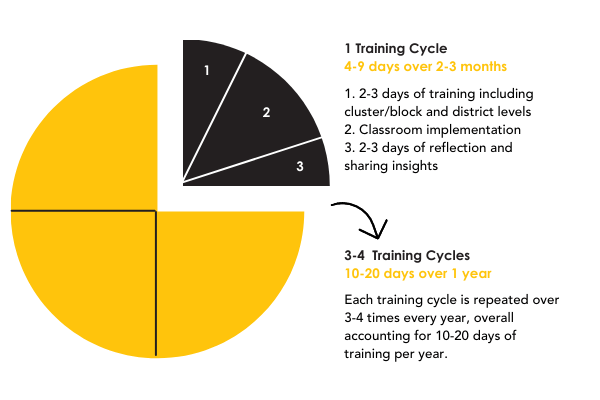
Training is operationalised through a cascaded-model, whereby state-level trainers instruct resource persons in the lower rungs of the educational administration on how to conduct the training modules. The number of layers of trainers depends on the number of teachers present in the system. This is a cost-effective and time-saving model of training that is adopted by several states like Uttar Pradesh, Madhya Pradesh, Tamil Nadu and Uttarakhand, amongst others.
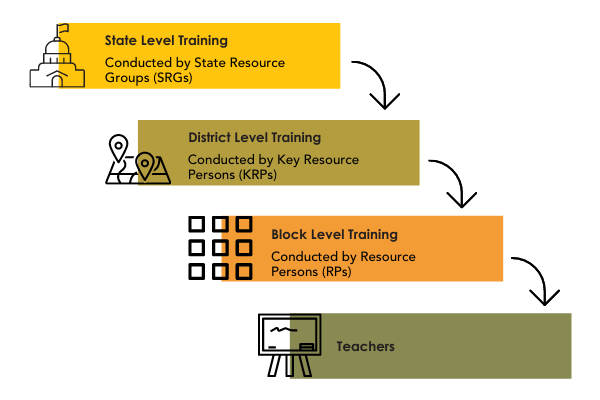
The trainers are often faculty at state and district level training bodies—they may be teacher educators and/or academic faculties at the DIETs. The content of the training is identified by the DIETs through a process called ‘Training Needs Assessment’ (TNA). Most states also identify training needs based on the National Achievement Survey data (NAS) or other such standardised student assessment data.
How Does Trickle Down Training Really Work?
Clearly, designated resource persons play a key role in delivering the training at the state, district and block levels. Even though the content of these training sessions is standardised and sometimes even digitised, the role of the trainer in facilitating peer-to-peer interactions and experiential learning cannot be undermined. However, while the cascade model is a key feature of teacher training in India, it has been observed that there are chances for information loss as a result of it.
This could be because the measures in place to train resource persons themselves seems to be inadequate. As a Joint Review Meeting conducted by the erstwhile Sarva Shiksha Abhiyan in Karnataka revealed, “No efforts have been undertaken to conduct a training need analysis or road mapping exercise to identify training areas or scheduling such programmes for teacher educators representing different levels and institutions.”
Additionally, teacher training is not the same as classroom teaching. Expert teachers need not necessarily be expert trainers. Or, simply put: andragogy, or adult education, is different from pedagogy for children.
However, in cascaded training, it has been observed that trainers are given the same training as teachers. Training resource persons on ‘how’ to facilitate sessions for adult learners, or on strategies to facilitate an adult learner’s engagement, would be far more effective than the current training sessions that resource persons receive. Some reports also cite that most states’ academic resources in the DIET generally seem to provide logistical and operational support in training as opposed to technical support.
Do Teachers Feel Supported by Trickle Down Training?
Though progress has been made in teacher training, it may not be at the desired pace considering the magnitude of the problem that needs to be addressed. For example, the ‘split-up’ model of training has been brilliantly envisioned with an optimal mix of both in-class teaching support and in-person training workshops. However, in a teacher-training evaluation conducted by NCERT almost a decade ago, it was observed that “training needs in some states reflected system perceived needs rather than expressed needs of teachers.”
“I have been attending training for the past twenty years. Rarely have I come across workshops that focus on new, innovative ideas that are also relevant and useful,” says Ms. Pinky. That Ms. Pinky feels this way is unsurprising: the contexts of India’s individual classrooms are vastly different, and cannot be adequately addressed through a one size fits all approach.
For example, in some states about 60-70% of classrooms are multigrade—that is, one teacher teaches children of different grades in a single class. The problem does not lie so much in acknowledging this fact, rather, given this reality, it lies in the consistency with which training interventions have been evaluated and strengthened. Various states like Rajasthan, Madhya Pradesh, and Gujarat adopted the Activity Based Learning methodology for elementary classrooms, a pedagogic process suited for multigrade classroom contexts. However, there is evidence that suggests that although well-intentioned, this model does not substantially improve classroom learning due to a variety of factors, such as lack of adequate teacher support, frequent changes to the programme design, and placing undue emphasis on pedagogic compliance rather than its underlying principles.
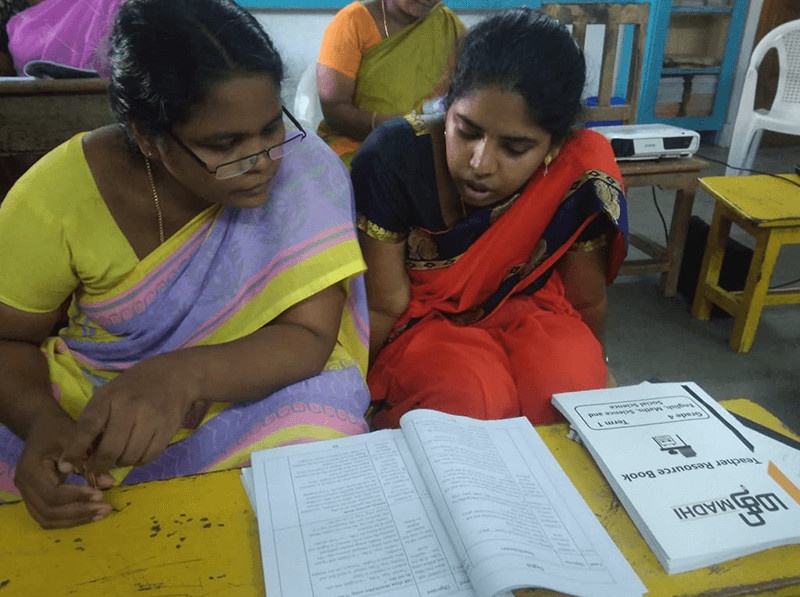
Beyond just devising training sessions though, monitoring classrooms will bolster the in-service support offered to teachers as part of their continuous professional development. However, the current state of this feedback loop is found inadequate in most states. “How can teachers improve classroom practices when the Block Research Teacher Educators (BRTE) walk into classrooms only to conduct random tests for the children?” asks Ms. Pinky.
Are Teacher Training Programs Keeping Up With a Dynamic Education System?
Whether it’s the Kothari Commission in 1966, the Programme of Action in 1986, the National Curricular Framework of 2005, the National Education Policy 2020 (NEP), all these documents have reiterated the fact that learning in the mother tongue—especially in early grades—leads to faster cognitive development and language acquisition.
However, there has been a proliferation of English-medium schools of late, a response to English becoming an aspirational language in our country. Given that state governments have begun to prioritise English education, in-service teachers have to match up to this new demand of delivering an English-medium education too, even if they themselves are not fluent in the language.
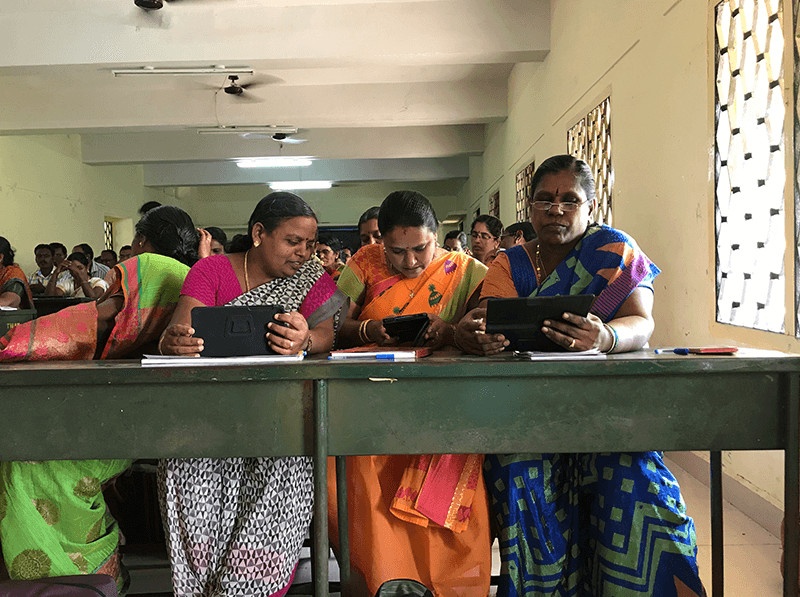
The problem here is not that teachers are not given any training in English-medium education—rather, that teacher training focuses more on theory than practice. The focus on imparting knowledge on topics like phonetic symbols and English grammar may not help a teacher imbibe foundational literacy skills in her elementary classroom. Training sessions could be made practical and contextual to the needs of adult learners who are learning English as a second language, as it is a lofty aspiration to ensure language acquisition over a short five-day training period, even if suitable learning materials are provided.
How To Bridge the Gaps in Our Teacher Training Models
- Refining the Cascade Model
The Centre and state governments have been proactive in addressing some of the critical issues of teacher training. For example, NISHTHA—an Integrated Teacher Learning Program launched under Samagra Shiksha in 2019—has done away with the multi-layered cascade training model by conducting only two levels of training. The National Resource Group (NRG) trains the Key Resource Persons (KRP); the KRPs then go on to directly train the teachers in a state. By reducing the number of layers of resource persons involved in the delivery, there are higher chances of retaining the high quality of training envisaged.
Given the evident up-side to this model of training, it will augur well for states to adopt the same. That is, the State Resource Group can directly train the Block or Cluster Resource Group, who can then directly train teachers, thereby minimising the transmission loss. Quality audits of training workshops based on standardised frameworks can also be conducted by SCERT and DIET officials. This will help in improving both training planning and delivery.
When it comes to the trainers themselves, the quality of the trainer will have a direct impact on the quality of training. To that end, the selection of resource persons for training should be based on stringent evaluation criteria laid down by the SCERT. The roles of different agencies—such as SCERTs, DIETs, BRCs, and CRCs—in the implementation of various academic, logistical and financial activities pertaining to training should be clearly demarcated.
- Making Training Relevant to Teachers’ Needs
Moreover, to make training more relevant to the needs of every teacher, a blended training approach—where elements of face-to-face training may be combined with digital training—can certainly aid the CPD of teachers.
In this light, NISHTHA is a step in the right direction—under it, teachers are provided access to Learning Management Systems (LMS) with online content for strengthening their Continuous Professional Development. Further, the National Education Policy, 2020 states that “Platforms (especially online platforms) will be developed so that teachers may share ideas and best practices” and that a “teacher will be expected to participate in at least 50 hours of CPD opportunities every year for their own professional development, driven by their own interests.” Teachers can attend these training sessions every month at the cluster-level and complete the courses on online platforms, thereby allowing individualised teacher competency trajectories to be chartered for their professional development. States should be encouraged to incentivize and recognise teachers who complete the courses. Madhya Pradesh, Uttar Pradesh, Haryana, and Tamil Nadu are a few of the states that are already exploring the usage of online platforms to strengthen teacher training.
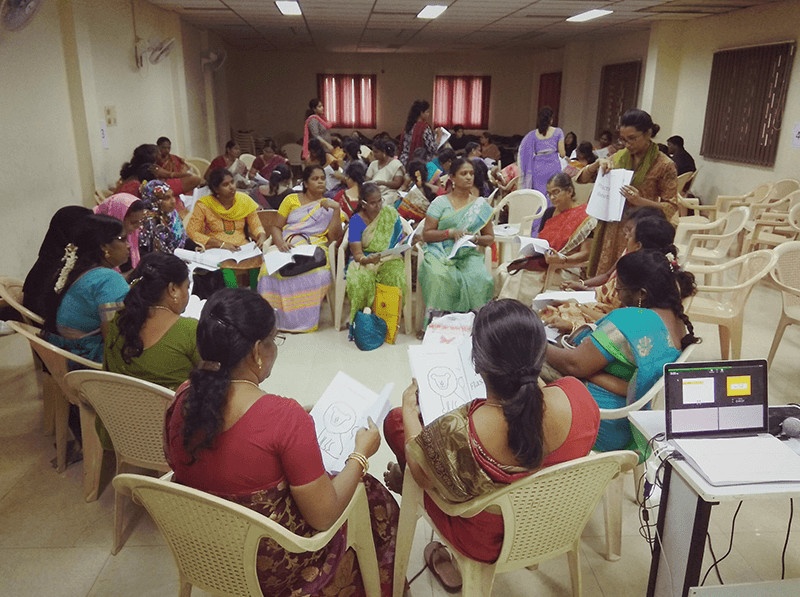
While the technology will aid in mapping teacher competencies through robust data-tracking systems, the face-to-face element allows training to be more experiential by providing opportunities for peer interactions and classroom simulations. Outside of training sessions, targeted and meaningful feedback can improve a teacher’s competency level. In this process, the mentor’s role should not be restricted to just collecting student assessment data, but should also extend to providing constructive feedback to teachers post-observation.
Most states have Cluster Resource Persons (CRPs) or BRTEs who visit schools at least once a month. To close the training feedback loop, they can be tasked with the responsibility of conducting qualitative classroom observations where indicators pertaining to the teaching-learning process are identified. Then, data collected on classroom observations should feed into data on an individual teacher’s growth trajectory, identifying areas of strength and areas for improvement for the teacher. Training Needs Assessment can be redesigned using data both from these classroom observations and teacher competency levels.
Tamil Nadu is currently working on a system to strengthen in-classroom teacher support through a mobile application called Tamil Nadu Vagupparai Nokkin. States and UTs like Himachal Pradesh, Delhi, and Chandigarh have also adopted similar processes to provide in-class support to teachers. Such efforts could work wonders for the continuous professional development of teachers.
- Designing Purposeful Training Sessions for Teachers
Finally, training workshops should be contextualised to the classroom realities that teachers teach in. A multigrade teacher should be sufficiently equipped in managing a classroom of children belonging to 3 different grades, as should a monograde teacher who teaches 35-40 children. These are the different realities in which our teachers operate, realities that our training workshops should be rooted in too.
Further, workshops that focus on language development should be immersive in nature. Supplementary materials given in the training sessions should be suited to our socio-cultural contexts. This goes for all training materials and programs: states should be given free rein in maintaining a platform of their choice and designing content suitable for their own cultural contexts and systemic capabilities. Provision of materials that will adequately support teachers to effectively transact content in classrooms, like teacher handbooks or teaching videos, should also be encouraged.
‘What’ children learn and ‘how’ they learn should be aligned and in-service teacher training acts as a conduit for the same. Training lakhs of government primary school teachers who have varied levels of experience and qualifications is a herculean task. Ensuring that every child goes to school is no longer a distant dream for our country—however, ensuring that every teacher feels empowered to provide a safe space in school where every child can learn and thrive should also soon be a reality.
Recalling Ms. Pinky’s thoughts at this juncture hints at the desired road ahead: “Teach us practical strategies that can be adopted in classrooms. Once we start seeing the value for ourselves, we will automatically be motivated to learn and innovate.”
For more on how to reform India’s education system, curated by The Bastion and the Madhi Foundation under ‘The Five Tenets of Education Reform’, click here.
*Names changed. | Featured image: Teacher training workshops held under the Literacy and Language Development Programme in 2018 by Madhi Foundation; Courtesy of Madhi Foundation.


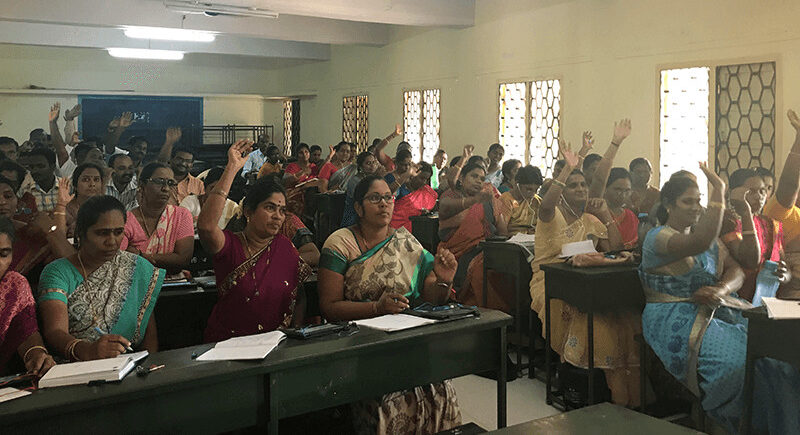




[…] the birth of innovative solutions at multiple implementation stages such as through launching blended teacher training processes, creating customised data dashboards for governance, and […]